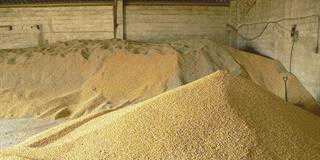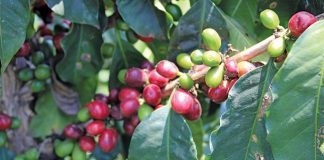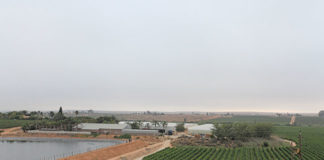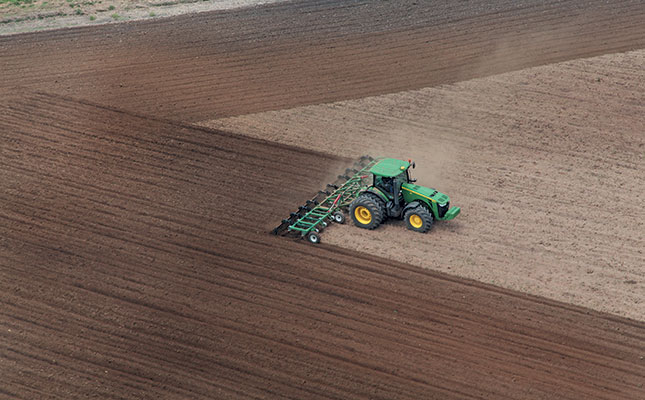
Jozua du Plessis, Grain SA’s Grain Producer of the Year 2016, has been a maize producer since the 1980s, and was one of the first South African producers to implement precision farming methods.
He currently farms on 3 000ha and produces non-GMO maize, potatoes, wheat, beans, soya bean seed and soya beans on 560ha under centre-pivot irrigation on his farms Middelbult, Witklip and Strydpan near Delmas, Mpumalanga.
In 2002, Farmer’s Weekly reported on Jozua’s production methods when he was a finalist in Grain SA’s Grain Producer of the Year competition. Since then, Jozua’s operation has improved with the greater implementation of his precision farming methods.
Adopting GPS technology
Jozua has been piloting fixed-wing aircraft and helicopters since 1987. When the first GPS technology was introduced to civilian aviation, he immediately realised its potential for crop farming.
“I remember telling my wife that everything would be GPS-controlled in future. From the sky, I could see the different levels of soil degradation on my farms caused by previous farmers, and I was enthusiastic about using precision farming and GPS technology to correct the soil,” Jozua recalls.
Before the introduction of this technology, Jozua took soil samples of his various lands, and calculated an average as the basis for correction.
“Acidic soil causes the under-development of roots, especially in drought. This means roots cannot utilise water or fertiliser. Producers often only correct for acidity. But if soil is treated with too much lime, roots cannot utilise trace elements. You have to balance the two and not focus only on getting rid of acidity. With precision farming, you can adjust for both,” he says.
Jozua says that when the technology became available, he immediately installed GPS on his tractors. He also began taking soil samples on 1ha grids, allowing him to make area-specific soil corrections. Initially, Jozua used contractors to apply lime and fertiliser, but he soon purchased his own variable spreaders and started conducting the soil sampling himself.
Then…
In 2002, Jozua told Farmer’s Weekly that as a result of the uncertainty of dryland crops, he mapped soils with high potential, which he reserved for irrigation.
In 1999, he started implementing precision farming by monitoring his crops’ vegetative development through the use of satellite remote imaging. At the time, precision farming was a little- known concept in South Africa.
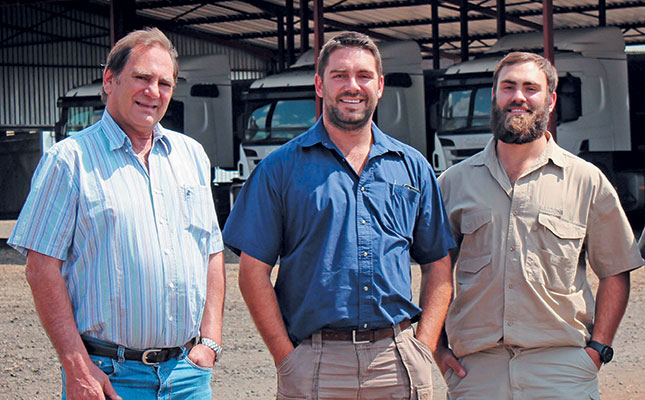
In 2001, he surveyed, sampled and analysed the irrigated lands’ soils and plotted the results on GPS overlay maps. He then used the data for soil correction.
According to him, crop rotation planning to control weeds and crop diseases is the backbone of sustainable production, and in 2002, he said that precision farming had helped him build accurate production records of each land, as all data had to be recorded.
…and Now
“Over time, precision farming has led to a 40% improvement in yield with both dryland and irrigated crops,” Jozua explains.
“I cannot give only precision farming the credit, and also need to credit the improvement of seed technology. My cultivation practices and fertilisation haven’t changed except for the corrections of pH, phosphorous and potassium on a 1ha-grid basis to get the nutritional status of the soil homogenous.”
During the recent drought, he harvested an average of 7,6t/ ha of maize under dryland production, and 14t/ha to 17t/ ha under irrigation. As standard practice, he does not plant in dry soil, not even if it is under irrigation. This results in higher yield, as planting is done later than usual, which benefits the crops during the drought.
In line with precision farming principles, Jozua standardised all tractors and planters in 2008, opting for John Deere equipment exclusively. He also changed from a six-row, 91cm planter to a 12-row, 76cm stack-fold lift planter to accommodate his precision farming methods.
According to him, using lift planters makes a definite difference. “Even if guided by GPS, planters that are dragged don’t follow the tractor precisely, especially on slopes. Lift planters follow the tractor exactly,” he says.
This is particularly important for subsequent cultivations, as it lessens the damage caused by spraying, spreading and harvesting.
Learning from the past
Jozua says that previous generations of farmers did not rely on pesticides, and today, farmers employing new tilling methods and depending on pesticides should learn from them.
“Previously, farmers controlled pests naturally. Present-day farmers seem to forget that insects overwinter in stubble. Farmers of previous generations worked stubble and stalks into the soil and broke the pest cycle. Moreover, most pesticides are not made to suit local semi-arid conditions, and are better suited to wet climates. You need to control pests naturally to ensure that pesticides are used only to control pests not killed by natural methods.”
He points out that years ago, farmers also used mechanical methods to keep lands pest- and weed-free, and worked their lands with disc harrows. After winter, when the first rain came and weeds germinated, chisel ploughs were used to cultivate the lands.
With the second rain, seedbeds would be prepared for planting. Both these cultivation methods eliminate weeds and control pests.
Weeds also use up moisture, and like stubble, harbour pests near their roots.
“These pests are simply looking for the next thing to eat, and there you are, planting it for them! I think many new farmers don’t know how previous generation farmers operated, and they’re unknowingly breeding pests that may become immune to pesticides in future.”
Jozua says that because he does not plant GMO maize, he does not have the advantage of Roundup Ready crops [genetically modified to be resistant to the herbicide, Roundup]. However, his conventional cultivation methods do not depend on the use of herbicides or pesticides.
Silos
Jozua’s on-farm silos have a combined capacity of 8 000t and are used for the storage and transfer of maize. While the silos were initially built as maize transfer facilities, they also became necessary when Jozua double-cropped with wheat, and had to plant maize directly after harvesting.
The entire process occurred over two weeks, and the storing and drying of wheat had to coincide with maize planting.
The silos were also erected to ensure that there was no contamination between the non-GMO maize and other GMO crops through contact or wind pollination.
As Jozua’s clients require high-quality, non-GMO maize for human consumption, the quality of the maize and its non-GMO status are confirmed on-farm.
Phone Jozua du Plessis Boerdery on 010 001 4201.
This article was oroginally published in the 9 December 2016 issue of Farmer’s Weekly.











